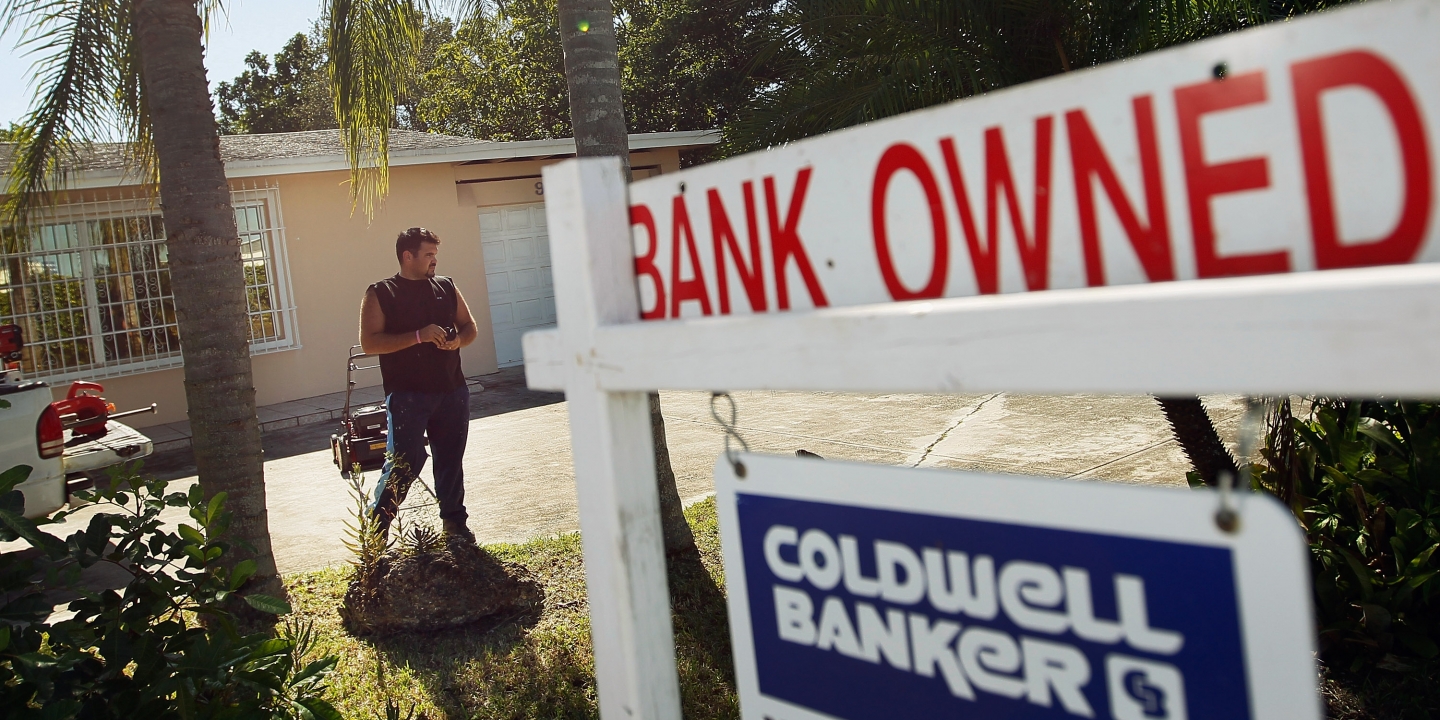by David Dayen
The Intercept
When President Obama announced the Home Affordable Modification Program, or HAMP, on February 18, 2009, in Mesa, Arizona, he promised it would assist 3 to 4 million homeowners to modify their loans to avoid foreclosure. Almost seven years later, less than 1 million have received ongoing assistance; nearly one in three re-defaulted after receiving inadequate modifications; and 6 million families lost their homes over the same time period.
Now the program is ending.
Tucked away on page 1,983 of the omnibus spending package, signed into law earlier this month, is the following language: “The Making Home Affordable initiative of the Secretary of the Treasury, as authorized under the Emergency Economic Stabilization Act of 2008 … shall terminate on Dec. 31, 2016.”
This language closes out a series of measures initiated after the financial crisis to aid homeowners facing foreclosure, but mostly, it ends HAMP. Few noted its passage, but progressives should be happy to see it go. Perhaps no program of the Obama era did more significant — and possibly irreparable — damage to the promise of an activist government that can help solve the country’s problems.
HAMP’s failure stemmed from its design. Rather than a cash-transfer program that hands vouchers to distressed borrowers so they can lower their mortgage payments, the government gives the money to mortgage servicing companies, to encourage them to modify the loans. But while the government sets benchmarks to follow, the mortgage companies ultimately decide whether or not to offer aid.
To appreciate why this could never succeed, you must understand that mortgage servicers typically have no direct interest in the loan. They are glorified accounts-receivable departments hired by mortgage holders to process monthly payments, handle day-to-day contact with homeowners, and distribute the proceeds. And with small staffs of entry-level workers, they could only turn a profit if they never need to perform any customer service. Handling millions of individual requests for relief simply overwhelmed them.
Furthermore, servicers make their money from a percentage of unpaid principal balance on a loan. Forgiving principal — the most successful type of loan modification — eats into servicer profits, so they shy away from that, opting for less effective interest rate cuts. Plus, servicers collect structured fees — such as late fees — which make it profitable to keep a borrower delinquent. Even foreclosures don’t hurt a servicer, because they make back their portion of fees in a foreclosure sale before the investors for whom they service the loan. The modest incentive payments in HAMP were no match for the contrary financial incentives toward foreclosure, rather than modifying loans.
With servicers in control of modifications, they could manipulate the program to pile more bad debt on borrowers and squeeze a few extra payments out before foreclosing. Servicers chronically lost borrowers’ income documents to extend the default period. They prolonged trial modifications well past three months, so they could rack up late fees. They granted modifications that folded servicer fees into the principal of the loan, increasing the unpaid principal balance — and thus their profit — while pushing the borrower further underwater. And they trapped borrowers after denying a modification, demanding back payments, missed interest, and late fees, with the threat of foreclosure as a hammer.
This often forced borrowers into “private” modifications with worse terms than the status quo. HAMP became a predatory lending scheme rather than an aid program, and even “successful” permanent modifications went sour too often, with high re-default rates.
According to the Special Inspector General for the Troubled Asset Relief Program (SIGTARP), 70 percent of homeowners who applied for the program were turned down for a permanent modification. Despite initially promising a $75 billion commitment to HAMP, through September of this year, the government has spent only $10.2 billion, with an additional $2 billion on related programs. Most of the spending came after the initial years when the foreclosure crisis was at its most acute.
In the most damning revelations of servicer misconduct, employees at Bank of America’s mortgage servicing unit testified in a class-action lawsuit that they were told to lie to homeowners, deliberately misplace their documents, and deny loan modifications without explaining why. For their efforts, managers rewarded them with bonuses — in the form of Target gift cards — for pushing borrowers into foreclosure.
Despite this, the Treasury Department never permanently sanctioned a single mortgage servicer for HAMP violations by clawing back incentive payments. They never used their leverage to force better outcomes. Instead, former Treasury Secretary Timothy Geithner told government officials, HAMP’s purpose was to “foam the runway” for the banks. In other words, it allowed banks to spread out eventual foreclosures and absorb them more slowly, protecting bank balance sheets. Homeowners are the foam being steamrolled by a jumbo jet in that analogy.
In recent years, the government tweaked HAMP, opening it up to more borrowers and giving higher incentive payments for principal reduction. But after years of horror stories, homeowners reasonably wanted nothing to do with the program, the way squirrels learn not to eat the poisonous berries. In the most recent SIGTARP statistics, 13,231 homeowners started permanent HAMP modifications in the third quarter of the year, while 13,226 others re-defaulted, leaving a net increase in active modifications of just five. Permanent modifications have decreased in 16 of the last 17 quarters.
Treasury Department spokesperson Mark McArdle has defended HAMP by touting the fewer modification denials in recent years, which coincides with fewer homeowners bothering to apply. Treasury also alleges in recent reports that 58 percent of borrowers denied a HAMP modification received some alternative modification from their servicer or resolved their delinquency, without noting whether that alternative made the homeowners’ financial situation better or worse.
Treasury’s claim comes from surveys of the servicers themselves, who have incentives to say that they help their customers. But we know that approximately 6 million families have lost their homes since the financial crisis began in September 2008, and unless few of them ever tried to get a HAMP modification, it’s hard to square the numbers.
You can excuse many of Obama’s accomplishments that failed to reach their goals by arguing that they sprung from a broken Congress, with supermajority hurdles ensuring Republican input. But HAMP, after being authorized by the legislation that gave us the bank bailout, was designed and implemented entirely by the White House. Congress authorized the executive branch to “prevent avoidable foreclosures,” and left the details to them. That HAMP became the result is the purest indication of how the administration prioritized the health of financial institutions over homeowners.
It also unnecessarily reinforced the old Ronald Reagan dictum that the most dangerous words in the English language are “I’m from the government and I’m here to help.” Families who sought out a government program to assist them in a time of need saw only a mortgage servicer who lost their paperwork, strung along their requests, and injured their financial security. The millions who experienced this abuse will find it difficult to ever believe in government again.









